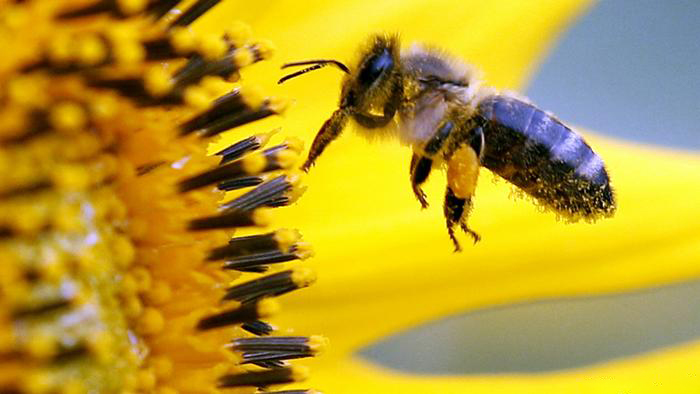Pollination
Humans aren’t the only ones who depend on bees for pollination. The vegetation that bees pollinate creates an important habitat for wildlife, including other pollinators. Landscapes that bees pollinate are good for the planet, too — the plants draw carbon from the atmosphere to use for photosynthesis, eliminating greenhouse gases from the atmosphere.

Buzz among the blossoms
- Honey bees are helpful for nectar and pollen exclusively, and as they use for these resources, honey bees accomplish pollination.
- Honey bees have hairy bodies that easily pick up pollen grains when foraging.
- Honey bees are proficient workers and require large quantities of nectar and pollen to rear their brood, and because of this, they visit flowers regulary and in large numbers to obtain these food sources.
- Honey bees are generalist foragers that tend to visit a broad spectrum of crop species and will visit almost any flowers from which they can harvest nectar and pollen.
- Once honey bee foraging behaviour has been trained onto a specific crop, they will generally continue foraging on the crop until the flowering period is over.
- Their body size enables them to pollinate flowers of many different shapes and sizes.
- Managed hives of honey bees can be delivered to crop at almost any time, will start foraging almost immediately, and can then be removed once flowering has finished.
- Honey bee colonies can be sourced throughout the year and can usually be sourced irrespective of when the crop flowers, and be distributed in almost any pattern around the crop.





